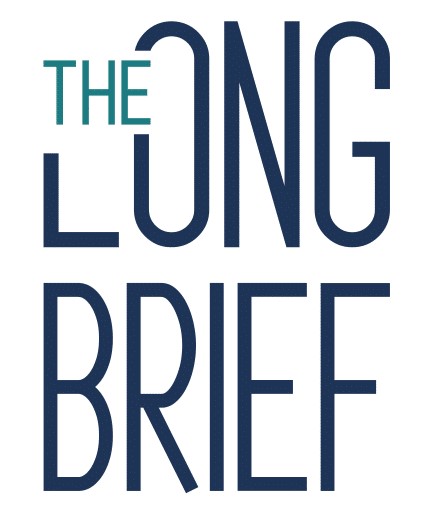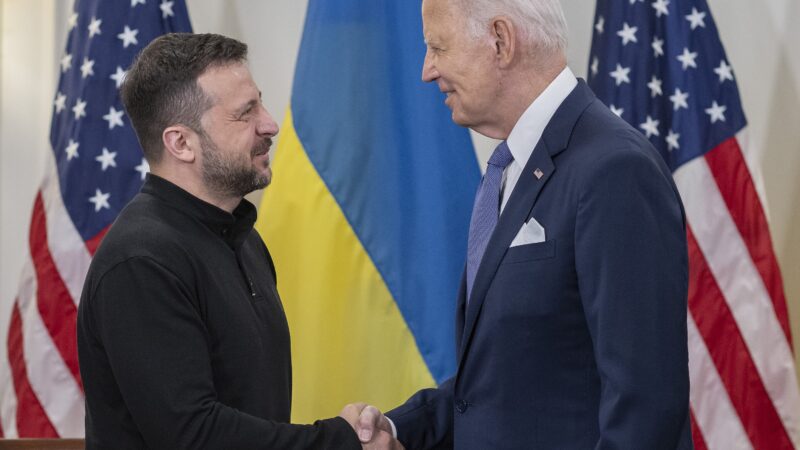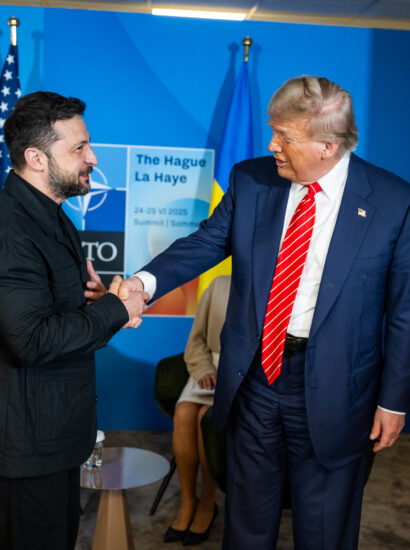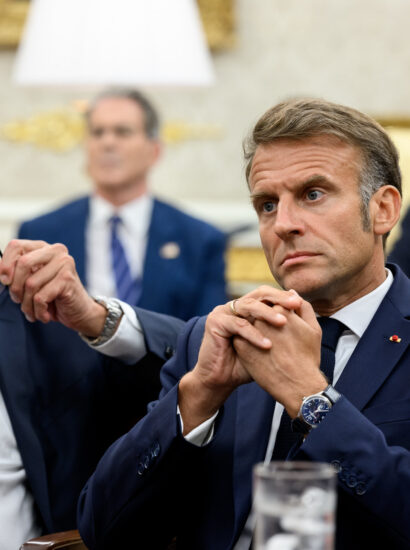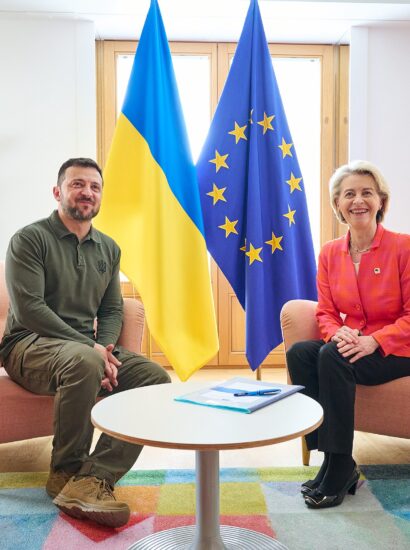US president Joe Biden, is pursuing a last-minute attempt to shore up American support for Ukraine – ahead of a possible victory for Donald Trump in the US election on November 5.
Biden feels that US foreign policy on Ukraine is under threat, if Trump wins. The US president has been a longstanding advocate of Ukrainian sovereignty, signing a ten-year security commitment to provide military support to Kyiv back in June. But, with only weeks left in office and facing the possibility of Trump winning the 2024 election, this raises a big question about who will – or won’t – be on Ukraine’s side from January 20 next year. Biden is now trying to stack the political deck in Ukraine’s favour before he goes.
Trump is an unpredictable foreign policy leader – and it is difficult to say exactly what he would do on Ukraine if elected next month.
But the signs are not good for Ukraine. Trump is seen as wanting to appease Putin. He has also publicly attacked Ukrainian president Volodymyr Zelensky. Doubts were raised about whether Trump would meet Zelensky during the latter’s recent visit to the US. In the end Trump did meet the Ukrainian leader, and apparently it didn’t go too badly.
US and EU officials have expressed concern that Trump would halt funding to Ukraine and even force Zelensky into accepting a ceasefire and possibly giving up territory to Putin. As a result, Biden sees a need to Trump-proof US policy on the conflict.
Backing up US support for Ukraine also furthers Biden’s aims even if his vice-president, Kamala Harris, wins the election. Committed to ending the war, Biden wants to leave Harris with a solid policy footing on which to build a resolution.
After such a polarised election campaign, Harris will be a controversial figure and a lightning rod for Republican ire if she wins office. Biden will want Harris to be in the best position possible to bring the conflict to a close.
Biden also wants to leave a legacy. He has spent his entire career working towards being president and was hoping for a second term. He cares about what he will be able to say he’s achieved in office. Last-minute progress on Ukraine would be one final win to be remembered for.
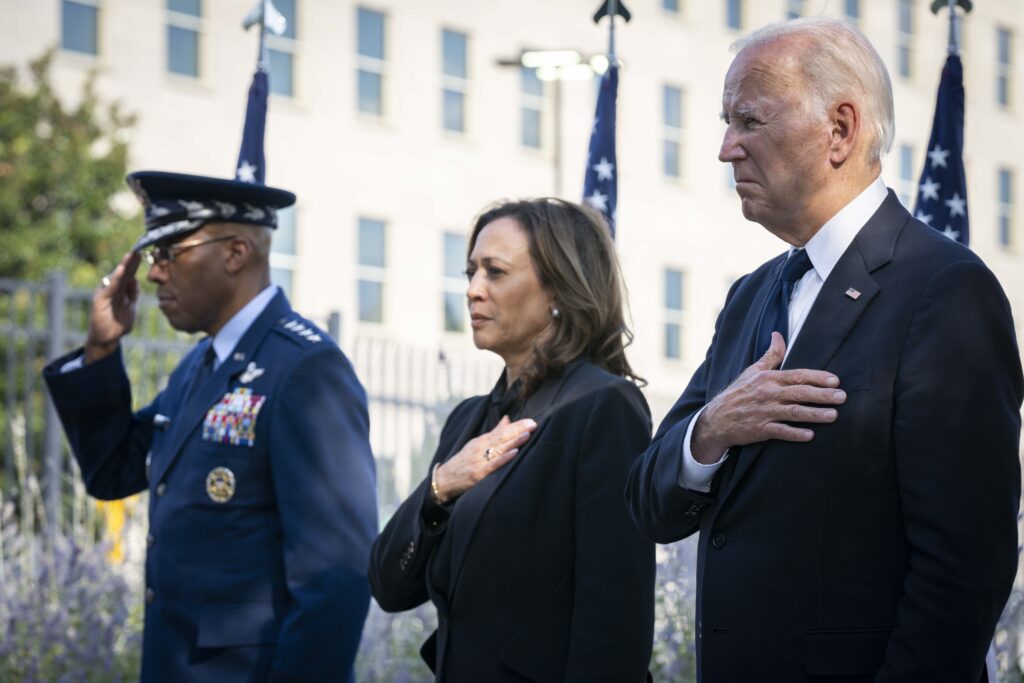
Gen. CQ Brown, Jr., Chairman of the Joint Chiefs of Staff, participates in a 9/11 Wreath Laying Ceremony alongside President Joe Biden, Vice President Kamala Harris and Secretary of Defense Lloyd J. Austin III, at the Pentagon, in Washington, D.C., September 11, 2024. (DOD photo by Chief Mass Communication Specialist James Mullen)
Biden has now adopted a two-pronged approach to Ukraine. First, he wants to make a strong and public statement that the US will stand by Ukraine. The cornerstone of this was a high-profile meeting at the White House last week between Biden, Harris, and Zelensky. Biden is trying to show that Ukraine is still “a top priority” for the US and wants to create an expectation of future American support – preferably in a way Trump can’t then ignore.
Second, Biden’s public stance is being backed up with aid. Biden recently announced a “surge in security assistance” for Ukraine in the form of an US$8 billion (£6.07 billion) package. The funding will provide new weapons to enhance Ukraine’s long-range strike capacity, which also suggests that Biden is sanctioning more offensive tactics against Russia and not purely short-range defence – although Washington does not currently permit Ukraine to fire the long-range missiles it has provided into Russia beyond the border region. The package also includes the Ukraine Security Assistance Initiative. This scheme allows the US government to purchase weapons for Ukraine from external companies without having to take them from American stockpiles.
As a further part of the surge, Biden has told the US Defense Department to use up all the security assistance funding already allocated to Ukraine by the end of his presidency.
Biden is making sure that this money does actually go to Ukraine – in case any successor tries to change the allocation or redirect the funding.
If it Quacks Like a (Lame) Duck
Once the election is over, Biden will still have time in office before the new president takes over in January 2025. This two-month period is referred to as a “lame duck presidency”, but freed from the need for re-election, presidents can sometimes push through major policy decisions in their final few weeks in power.
But Biden has limited influence, especially while the election campaign is still happening. He wants to publicise the issue of Ukraine as a key aspect of his strategy, but risks being criticised if he does anything that takes the spotlight off Harris. The outgoing president has involved Harris in his efforts so far but the Democrats see this as her time now. Harris’s campaign will direct the wider party position on Ukraine – not Biden.
Biden and Harris’ recent meeting with Zelensky was supposed to outline a “victory plan” to bring a diplomatic solution to the war. But it isn’t clear how this potential bid to push Putin into a peace agreement that Ukraine considers fair will change the situation – more specifically, what Biden can do about this in his short-term position.
He can build on policies already in place – such as aid provision – but he will not be able to introduce any radical solution to the crisis.
And a radical solution is what is needed in Ukraine. The reality is that Biden’s foreign policy efforts have always been largely welcome to Ukraine – but they have never enough to bring about a resolution. More tinkering at the edges is not going to end the war anytime soon. It is also unclear how far Biden’s actions would moderate Trump. Ukraine is positive about Biden’s new commitment to aid, but this still won’t be much of a firewall against a Trump presidency that could favour Putin. Ultimately, Biden is doing little more than crossing his fingers for Ukraine as he walks out the White House door.![]()
This article is republished from The Conversation under a Creative Commons license. Read the original article.
